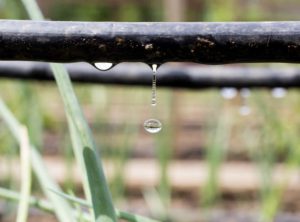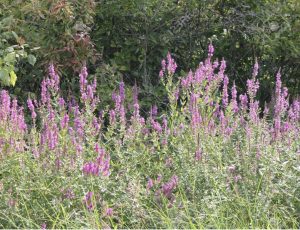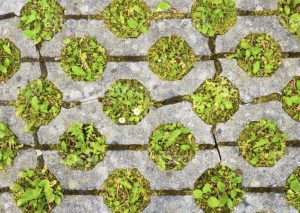In the hot and dry climate of Vancouver Island, commercial property owners face unique challenges when it comes to maintaining appealing outdoor spaces. However, with cost-effective and low-maintenance landscaping strategies, businesses of all sizes can create sustainable and visually pleasing environments. By incorporating water-efficient irrigation systems, native plant species, and hardscaping solutions, commercial property owners can reduce water consumption, enhance biodiversity, and minimize maintenance requirements. This blog will explore landscaping ideas suitable for small businesses and large office complexes, providing practical and sustainable approaches to creating vibrant landscapes while minimizing costs and maintenance efforts.

Water-Efficient Irrigation Systems:
- In hot and dry climates, water conservation is crucial. Opting for water-efficient irrigation systems reduces water consumption and saves costs in the long run. Consider these options:
- Drip Irrigation: This system delivers water directly to the plant’s root zones, minimizing evaporation and runoff. Drip irrigation maximizes water efficiency and reduces waste by providing water precisely where it is needed.
- Smart Irrigation Controllers: These advanced systems use weather data and soil moisture sensors to adjust watering schedules automatically. They prevent overwatering by adapting to changing weather conditions, ensuring that your plants receive the right amount of water at the right time.
- Rainwater Harvesting: Install rain barrels or cisterns to collect and store rainwater. This water can be used during dry spells, reducing reliance on municipal water supplies and lowering utility costs.

Native Plant Species:
- Selecting native plant species is an excellent way to create a sustainable and low-maintenance landscape. Native plants are well-adapted to the local climate, requiring less water, fertilizer, and maintenance compared to non-native alternatives. Benefits include:
- Drought Tolerance: Native plants have evolved to withstand local climate conditions, including heat and drought. They can thrive with minimal water inputs once established, reducing the need for irrigation.
- Biodiversity and Wildlife Habitat: Native plants support local ecosystems by providing food and shelter for native birds, insects, and other wildlife. Enhancing biodiversity contributes to a healthy and balanced environment.
- Low Maintenance: Native plants have adapted to local soils and pests, reducing the need for excessive fertilizers and pesticides. They generally require less pruning and can withstand natural fluctuations in temperature and precipitation.

Hardscaping Solutions:
- Incorporating hardscaping elements into your landscape design adds aesthetic appeal and reduces maintenance and water requirements. Here are a few ideas:
- Xeriscaping: This landscaping technique utilizes gravel, rocks, and drought-tolerant plants to create visually appealing and water-wise landscapes. You can significantly decrease water usage and maintenance efforts by reducing the turfgrass area and replacing it with hardscape features.
- Permeable Pavement: Use permeable materials such as porous concrete or gravel for walkways and parking areas. These surfaces allow rainwater to seep into the ground, replenishing groundwater and reducing stormwater runoff.
- Mulching: Applying a layer of organic mulch around plants helps retain soil moisture, suppress weed growth, and regulate soil temperature. Mulch reduces evaporation and minimizes the need for watering and weed control, making it a cost-effective and low-maintenance solution.
Landscaping in hot and dry climates on Vancouver Island can be manageable for commercial property owners. By adopting cost-effective and low-maintenance landscaping strategies, businesses can create sustainable and visually appealing outdoor spaces while conserving water and minimizing maintenance efforts. Incorporating water-efficient irrigation systems, native plant species, and hardscaping solutions provides practical and sustainable approaches to meeting these goals.